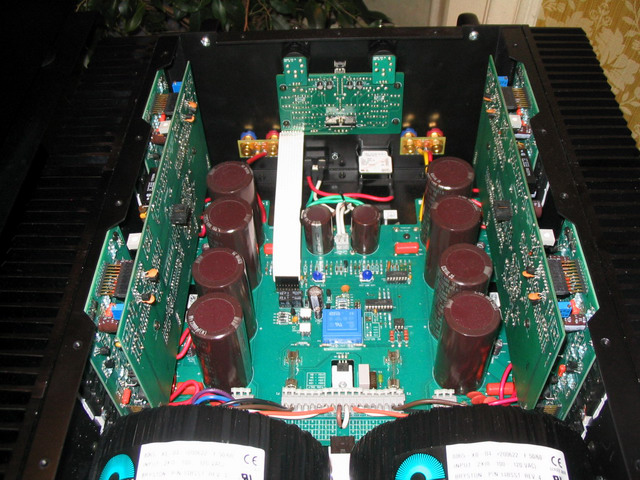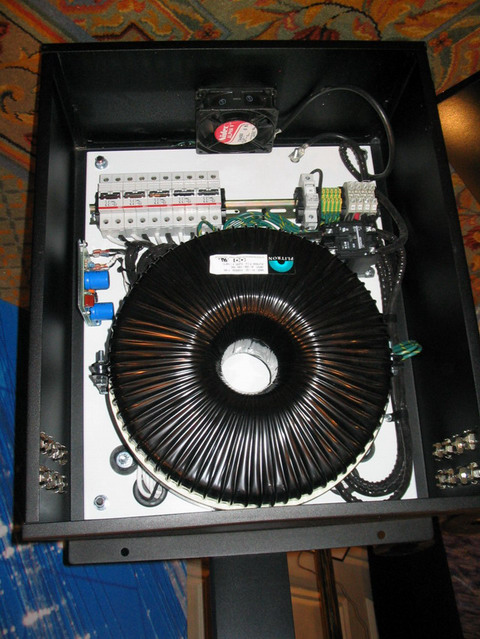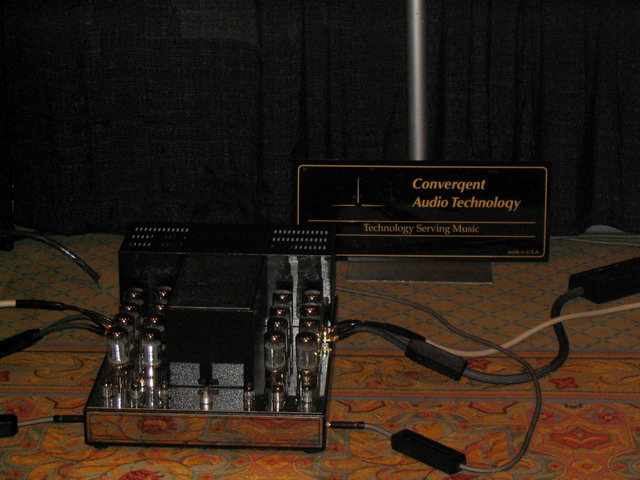AUDIOPHILE EQUIPMENT
Over at the Venetian/Sands was the Audiophile
section of the CES show. Don’t get me wrong, I
like good sounding audio as much as the next
person, and can appreciate high quality
equipment and speakers. The problem with a lot
of what is shown in the high end area is so far
over the top, I can’t justify the amount of
money being spent on the equipment. Each room
that I went into was playing some obscure track
of a pan flute or oboe being played that I
personally would never listen to, through $50K+
speakers and $30K+ speakers, and oh yes, the
$5000 speaker cables and line level cables
(oops, call them ‘interconnects’, not RCA
cables!) are mandatory.
Many of the demo rooms had 10-12’ ceilings in
them, and were almost square, so the
reverberation in the rooms were high, and
precious few manufacturers paid any attention to
putting some sound dampening material in the
rooms. To me, many of these demo rooms sounded a
lot worse than they could have. After about 20
demos of high end speakers with cabinets treated
with JoJoba oils and the wings of the tsetse fly
found only in deepest Africa, I got tired and
left the audiophile exhibit area. Funny enough,
at least two rooms used 1979 vintage Technics
reel to reels as an audio source (see the Audio
Federation links below). I happen to own four of
those reel to reel machines, so I guess that
makes me 4 times audiophile as the person that
only owns one?
I was witness to one speaker cable demo
though that deserves mentioning. They were in
the same room as Bryston amplifiers (which are
indeed well built) and a power
conditioning/distribution unit shown below. I’ll
leave out the name of the cable company since I
don’t remember it anyways, and I don’t want to
get sued..:)
The premise of the speaker cable was that
based on some theory given by Nikolai Tesla many
years ago, they were able to actively treat the
speaker cable to have ZERO capacitance over it’s
length. Furthermore, they were able (according
to them) to switch their active treatment of the
cable on and off, so you could hear the
difference. Oohhhkaaay, I’ll buy into this
theory for now. However, let me geek speak for a
second: Every cable has capacitance, that’s the
nature of cable. In theory, if you have too much
capacitance in a cable, speaker, cablevision or
line level, you WILL affect the sound or picture
going through the cable. Too much capacitance,
and you lose the high end frequency response
(the treble in audio, the fine detail in video
content).
However…. Most cables have such little
capacitance that even 100’ of said ordinary
cable will not affect the sound quality
whatsoever. According to this rep from this
cable treatment company however, the differences
heard in the ‘before’ and ‘after’ the active
treatment were profound.
The rep told the 6 or so in the room that he
would play 45 seconds of a CD through the
Bryston amps with the active treatment on, then
he’d stop the CD, start it over with the switch
in the ‘off’ position. Fair enough.
So I listen once again to some female singer
that I’ve never heard of singing some piece of
music that I’ve never heard before. It starts
softy, then builds to the chorus. As the chorus
starts, he pauses the CD, goes over to the
amplifier and turns off a switch. After about 10
seconds, he turns the CD back on again, and the
chorus starts. Well wait a sec. For the most
part, the music with the active treatment was
soft acoustic music, now he’s switching off the
active treatment at the start of a loud passage.
He didn’t start the CD over to replay what we’d
already heard.
After he did this twice, I asked him why he
didn’t turn the active treatment on and off on
the fly, without stopping the CD. The rep tells
me that there is a decay and rise time as the
active treatment turns on and off. Well fine,
but if the difference is that profound, should
we not hear a change in frequency response or
the soundstage as the unit is turned on or off?
He didn’t answer.
After the demo, all other 5 guys in the room
claim to have heard a difference… except me. I
let the other guys leave before I told him that
I didn’t hear a difference. He also told me that
the speaker cable that they used had minimal
capacitance to it in the first place, but
changing it to have zero capacitance still made
a difference, and he was sorry that I didn’t
hear it. I guess I’m just a poor uneducated guy
that can’t possibly have good hearing…
Interestingly enough, I had a conversation
with a rep from an audiophile speaker company
that agreed with me. A poorly built audiophile
type speaker cable with massive capacitance
(yes, they are out there) can actually cause
unstable audiophile amps to blow up, and that
while their company uses good quality cable
within their speaker cables, they don’t
subscribe to the audiophile claims that the
speaker cable companies claim. They use high
quality copper cables in their expensive
speakers.
So, go ahead and buy into some of the
outlandish claims that some of these audiophile
companies say they do to improve your system. I
still say that a well thought out audio or video
or home theater system with careful attention
paid to power distribution and room
acoustics/treatment will do more for your
viewing and listening experience than $100 cork
dots put on your back wall…
So here’s some pictures of the audiophile
stuff…
Bryston: Canadian made, well built with a 20
year warranty.


The power conditioner/isolator company that
was at the same room that Bryston was:

While the picture doesn’t really show it,
that Toroid transformer is one of the largest
that I’ve ever seen…
Got tube? If you’re a REAL audiophile, I
guess you need tube equipment. There was lots of
it at the show.


Far better coverage of the high end stuff is
can be found
here.

|





